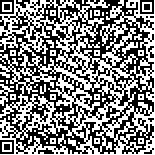| 摘要: |
| [摘要] 目的 探讨右美托咪定对腹腔镜完全腹膜外疝修补术患者在围手术期应激及苏醒质量的影响。方法 将择期行腹腔镜下完全腹膜外腹股沟疝修补术40例患者,随机分为右美托咪定组(D组)和生理盐水组(C组),每组20例。两组患者均采用气管插管静脉麻醉。D组在麻醉诱导前15 min予负荷剂量盐酸右美托咪定0.2 μg/kg,术中右美托咪定以0.4 μg/(kg·h)维持静脉泵注,直至手术结束前20 min结束泵注。C组患者予相同方式泵入同等量的生理盐水。麻醉维持均采用丙泊酚和瑞芬太尼静脉泵注,维持脑电双频谱指数(BIS)40~60。记录麻醉诱导前15 min(T0)、气管插管后1 min(T1)、手术开始时(T2)、气管插管拔管时(T3)及术后30 min(T4)的平均动脉压(MAP)、心率(HR)。抽取外周静脉血,检测这几个时间点的肾上腺素(E)、去甲肾上腺素(NE)水平和血糖(Glu)值。记录心动过缓、心动过速、高血压、拔管后躁动及呕心呕吐等不良事件发生情况。结果 D组患者在T1、T2、T3、T4的E、Glu较T0时明显升高,在T1、T2、T3的NE较T0也明显升高(P<0.05)。C组患者在T1、T2、T3、T4的E、NE、Glu均较T0明显升高(P<0.05)。与C组相比较,D组在T1、T2、T3、T4各时间的E、NE和Glu均明显降低(P<0.05)。不良反应方面对比,D组的心动过速、高血压、拔管后躁动、恶心呕吐发生例数少于C组,但心动过缓发生例数多于C组。D组总的不良反应发生率(20.0%)较C组(65.0%)明显降低(P<0.05)。结论 右美托咪定是一种高选择性α2肾上腺素能受体激动剂,具有中枢抗交感神经作用,有明确的镇静、镇痛作用,可以抑制腹腔镜完全腹膜外疝修补术患者的应激反应,保证手术安全性,提高复苏质量。 |
| 关键词: 右美托咪定 完全腹膜外疝修补术 应激反应 苏醒质量 |
| DOI:10.3969/j.issn.1674-3806.2019.09.19 |
| 分类号:R 614.2+4 |
| 基金项目: |
|
| Effects of dexmedetomidine on stress and recovery in patients undergoing laparoscopic totally extraperitoneal prosthesis under general anesthesia |
|
SONG Xiao-qian, HAO Lei, CAI Jian
|
|
Department of Anesthesiology, Taicang Hospital of Traditional Chinese Medicine, Suzhou City, Jiangsu 215400, China
|
| Abstract: |
| [Abstract] Objective To investigate the effects of dexmedetomidine on perioperative stress and recovery in patients undergoing laparoscopic totally extraperitoneal prosthesis. Methods A total of 40 patients undergoing elective laparoscopic totally extraperitoneal inguinal prosthesis were randomly divided into dexmedetomidine group(group D) and saline group(group C), with 20 cases in each group. The patients in both groups were treated with tracheal intubation and intravenous anesthesia. In group D, a loading dose of dexmedetomidine hydrochloride(0.2 μg/kg) was administered 15 minutes before anesthesia induction, and intravenous pumping infusion of dexmedetomidine was maintained at 0.4 μg/(kg·h) intraoperatively untill 20 minutes before the end of the operation. The patients in group C were given the same amount of saline in the same way as those in group D. Intravenous pumping infusion of propofol and remifentanil was used for anesthesia maintenance, and the bispectral index(BIS) of EEG was maintained from 40 to 60. The mean artery pressure(MAP) and heart rate(HR) were recorded 15 minutes before anesthesia induction(T0), 1 minute after tracheal intubation(T1), at the beginning of surgery(T2), at tracheal intubation(T3), and at 30 minutes postoperatively(T4). Peripheral venous blood was drawn to detect the levels of epinephrine(E), norepinephrine(NE) and blood glucose(Glu) at the time points of T0, T1, T2, T3 and T4. The adverse events of bradycardia, tachycardia, hypertension, restlessness after extubation, nausea and vomiting were recorded. Results In the patients of group D, the levels of E and Glu at T1, T2, T3 and T4 were significantly higher than those at T0, and the levels of NE at T1, T2 and T3 were significantly higher than those at T0(P<0.05). In the patients of group C, the levels of E, NE and Glu at T1, T2, T3 and T4 were significantly higher than those at T0(P<0.05). Compared with those in group C, the levels of E, NE and Glu at T1, T2, T3 and T4 in group D were significantly decreased(P<0.05). In terms of adverse reactions, the number of cases of tachycardia, hypertension, restlessness after extubation, nausea and vomiting in group D was significantly lower than that in group C, but the number of cases of bradycardia was higher than that in group C. The total incidence of adverse reactions in group D(20.0%) was significantly lower than that in group C(65.0%)(P<0.05). Conclusion Dexmedetomidine is a highly selective α2 adrenergic receptor agonist with central anti-sympathetic effects, definite sedative and analgesic effects, and can partially inhibit the stress response of the patients undergoing laparoscopic complete extraperitoneal herniorrhaphy and ensure the safety of the operation and improve the recovery quality. |
| Key words: Dexmedetomidine Totally extraperitoneal prosthesis Stress response Quality of recovery from anesthesia |

